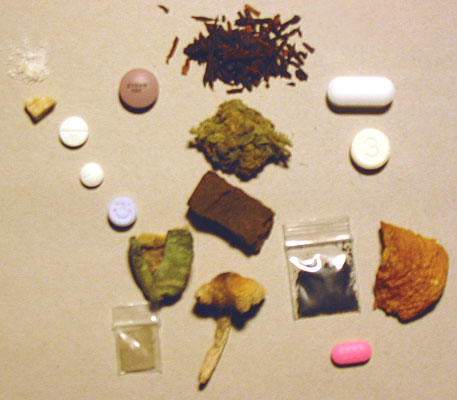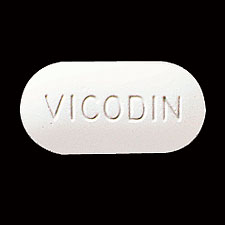
.
.

where shall we go today?
.
 Wall Street Compensation on Track to Soar Again
Wall Street Compensation on Track to Soar Again
Business is back on Wall Street. If the good times continue to roll, lofty pay packages may be set for a comeback as well.
Based on analysts’ earnings forecasts for 2009, Goldman Sachs Group Inc. is on track to pay out as much as $20 billion this year, or about $700,000 per employee. That would be nearly double the firm’s $363,000 average last year, and slightly higher than the $661,000 for the average Goldman employee in fiscal 2007, according to analyst estimates reviewed by The Wall Street Journal.
Morgan Stanley, the only other huge U.S. securities firm left as an independent company, will likely pay out $11 billion to $14 billion in compensation and benefits this year, analysts predict. On a per-employee basis, payouts are expected to exceed last year’s average of $262,000. Howard Chen, an analyst at Credit Suisse, projects that the company’s average pay will come close to the $340,000 paid out by Morgan Stanley in fiscal 2007.
Some of the most lucrative pay packages are being offered in businesses that are improving, such as junk-bond trading. more
.
.
 $
$
U.S. seeks to name USB tax frauds

.
.
What Happens When You Decriminalize ALL Drugs?

.
.

yum!
want to see your product placed and linked here?
.
.
 The Poppy War – Khanja
The Poppy War – Khanja
Thousands of US Marines launch huge anti-Taliban drive in Afghanistan – Major military operation under way in Afghanistan.
Thousands of U.S. Marines and hundreds of Afghan troops poured into Taliban-infested villages of southern Afghanistan with armor and helicopters Thursday in the first major operation under President Barack Obama’s strategy to stabilize the country.
The offensive was launched shortly after 1 a.m. Thursday local time (4:30 p.m. EDT Wednesday, 2030 GMT Wednesday) in Helmand province, a Taliban stronghold and the world’s largest opium poppy producing area. The goal is to clear insurgents from the hotly contested region before the nation’s Aug. 20 presidential election.
Officials described the operation, dubbed Khanjar, or “Strike of the Sword,” as the largest and fastest-moving of the war’s new phase and the biggest Marine offensive since the one in Fallujah, Iraq, in 2004. It involves nearly 4,000 newly arrived Marines and 650 Afghan forces. British forces last week led similar, but smaller, missions to clear out insurgents in Helmand and neighboring Kandahar provinces.
“Where we go we will stay, and where we stay, we will hold, build and work toward transition of all security responsibilities to Afghan forces,” Marine Corps Brig. Gen. Larry Nicholson said in a statement.
Transport helicopters carried hundreds of Marines into the village of Nawa, some 20 miles (30 kilometers) south of the provincial capital of Lashkar Gah, in a region where no U.S. or other NATO troops have operated in large numbers. more
Marines Assault
.
.

U.S. Begins Taliban Offensive
Helmand River Valley produces more than half of the opium cultivated in Afghanistan, the source of about 90 percent of the global supply, according to the United Nations Office on Drugs and Crime. In 2008 more than 103,000 hectares of poppy were cultivated. The drug crop is closely tied to the insurgency and the Taliban are mainly funded by the opium trade. poppies poppies
.

.
.
.
.
.
.
.

traci
ACLU Says Government Used False Confessions
The American Civil Liberties Union yesterday accused the Obama administration of using statements elicited through torture to justify the confinement of a detainee it represents at the U.S. military prison in Guantanamo Bay, Cuba.
The ACLU is asking a federal judge to throw out those statements and others made by Mohammed Jawad, an Afghan who may have been as young as 12 when he was captured. His attorney argued that Jawad was abused in U.S. custody, threatened and subjected to intense sleep deprivation.
“The government’s continued reliance on evidence gained by torture and other abuse violates centuries of U.S. law and suggests the current administration is not really serious about breaking with the past,” said ACLU lawyer Jonathan Hafetz, who is representing Jawad in a lawsuit challenging his detention.
Justice Department spokesman Dean Boyd said the government would not comment on the types of evidence it will use in Jawad’s case challenging his imprisonment. “We intend to prove our case in court rather than attempt to do so through the media,” Boyd said. more
.
.
.
Iraq’s National Sovereignty Day is U.S.-Style Hallmark Hype.

.
.
.
American’s Sweetheart .

.
Fight them over there vs. over here’ a false choice – US Representative Ron Paul
The world is a dangerous place and we should be concerned, but intervention and militarism cannot solve our problems. The answers to our foreign policy problems lie in defending our soil, scaling back our global military footprint and trading with all willing partners. We have strayed far from this philosophy, but we can get back on track by looking to our Constitution, our traditions and the example of our Founding Fathers. more
1. American sovereignty from global and globalist institutions
2. A strong national defense
3. Strict adherence to the Constitution
4. Leading the world by example, not aggression
5. Refraining from meddling in the affairs of other countries.
.
.
.
Is This Man Gay?

not that there’s anything
wrong with it
.

.
.
.
.
.
.
.
.
.

.
 ,Also -The Future of Food
,Also -The Future of Food
.
.
Ban Is Advised on Two Top Pills for Pain Relief
 A federal advisory panel voted narrowly on Tuesday to recommend a ban on Percocet and Vicodin, two of the most popular prescription painkillers in the world, because of their effects on the liver.
A federal advisory panel voted narrowly on Tuesday to recommend a ban on Percocet and Vicodin, two of the most popular prescription painkillers in the world, because of their effects on the liver.
The two drugs combine a narcotic with acetaminophen, the ingredient found in popular over-the-counter products like Tylenol and Excedrin. High doses of acetaminophen are a leading cause of liver damage, and the panel noted that patients who take Percocet and Vicodin for long periods often need higher and higher doses to achieve the same effect.
Acetaminophen is combined with different narcotics in at least seven other prescription drugs, and all of these combination pills will be banned if the Food and Drug Administration heeds the advice of its experts. Vicodin and its generic equivalents alone are prescribed more than 100 million times a year in the United States. more
.
Suicide Warnings for 2 Anti-Smoking Drugs
.
.

Unlocked: the secrets of schizophrenia
Scientists have discovered a remarkable similarity between the genetic faults behind both schizophrenia and manic depression in a breakthrough that is expected to open the way to new treatments for two of the most common mental illnesses, affecting millions of people.
Previously doctors had assumed that the two conditions were quite separate. But new research shows for the first time that both have a common genetic basis that leads people to develop one or other of the two illnesses.
Three different international studies investigated the genetic basis of schizophrenia by pooling their analysis of about 15,000 patients and nearly 50,000 healthy subjects to find that thousands of tiny genetic mutations – known as single nucleotide polymorphisms (SNPs) – are operating in raising the risk of developing the illness. more
From Space
.
.
.

.
.
.
.
he’s calling…

go now!





 Wall Street Compensation on Track to Soar Again
Wall Street Compensation on Track to Soar Again



 The Poppy War – Khanja
The Poppy War – Khanja









 A federal advisory panel voted narrowly on Tuesday to recommend a ban on Percocet and Vicodin, two of the most popular prescription painkillers in the world, because of their effects on the liver.
A federal advisory panel voted narrowly on Tuesday to recommend a ban on Percocet and Vicodin, two of the most popular prescription painkillers in the world, because of their effects on the liver.


 Tons of released drugs taint US waters
Tons of released drugs taint US waters A “memory pill” that could aid exam revision and help to prevent people forgetting important anniversaries may soon be available over the counter.
A “memory pill” that could aid exam revision and help to prevent people forgetting important anniversaries may soon be available over the counter. 

